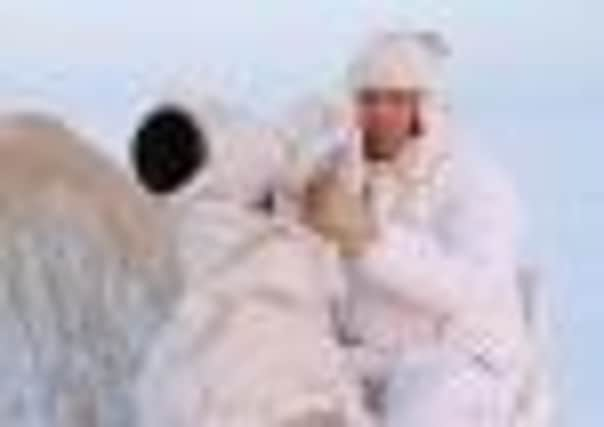School run offers an eye-opener on Wolds


The icy roads meant it was my responsibility to do the school run, a nine mile drive across single track roads through some of the best scenery and wildlife that the Yorkshire Wolds has to offer.
But each day as I passed one field that Hockney has painted, hundreds of small birds were swirling over a stretch of hawthorn hedge.
Advertisement
Hide AdAdvertisement
Hide AdI stopped to take a closer look through my binoculars and it was like looking through a kaleidoscope as hundreds of brightly coloured birds burst into definition. In the flock were goldfinches, corn buntings, linnets, bramblings, yellow hammers and even a few dozen reed buntings. Corn bunting are so rare these days that they feature on the RSPB’s red list of endangered species – and here were at least 200 of them. They were feeding on a conservation strip at the edge of a field planted with triticale wheat, linseed, sunflower and both red and white millet. The snow had fallen off the seed heads leaving them for the wild birds to feast on.
This farm has Higher Level Stewardship conservation status and these strips were planted to sustain these birds through the winter. It certainly was doing its job.
Despite temperatures of -4°C, I got ready for a day in the snow photographing this spectacle. In a recently purchased white ski suit, I sat down on the edge of the cover strip to wait. Within minutes I was surrounded by swirling clouds of finches and buntings. The noise was incredible as all the birds called to one another. It was exhilarating and put me in mind of watching red-billed quelia finches in Africa, whose numbers can reach biblical proportions. I hadn’t seen anything like this in the UK before. The birds would settle down to feed for a few minutes, but were easily spooked. There must have been well over 1,000 birds in the air at one time. I stayed all afternoon and this strip of food also attracted rooks and crows, completely unfazed by my presence. Plus at one time I had over a dozen red-legged partridges strutting around me, some within five feet. I was beginning to think I was invisible in my white suit until I sat back in my chair and the air exploded with whirling wings as the partridges took flight, setting off a chain reaction and the low sun made it perfect for some great shots. I had just taken my camera off the tripod when a female sparrowhawk came cruising by, sending the remaining flocks scattering.
I got into my car and headed home but before long dozens of fieldfares caught my eye on top of the hedge. I slowed to take a look and in a flash a sparrowhawk came from behind the hedge, flew in front of the car and took one fieldfare on the wing.
Advertisement
Hide AdAdvertisement
Hide AdI stopped and the hawk, spooked by the car, released its grip just enough for the fieldfare to escape in a flurry of feathers. It made for a dramatic end to a great day and I headed home to get warm and show off my photographs, which I hope one day will make a cracking painting.
Robert Fuller’s gallery is at Fotherdale Farm, Thixendale. 01759 368 355. www.robertefuller.com